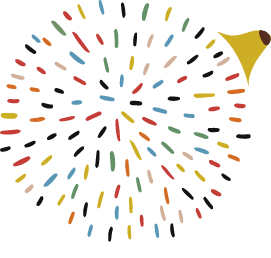American Licorice: A Waste Reduction Case Study
American Licorice Company drastically reduced the garbage it produces and saved almost 50,000 dollars per year in avoided disposal costs and revenue earned from selling recyclables. In the food manufacturing industry, cutting your waste in half is a job well done. American Licorice eliminated 98%, making this company’s performance exceptional. Additional projects avoided creating waste in the first place and saved additional resources on materials and labor.
Business Profile
American Licorice Company’s Union City facility manufactures licorice products, including the RedVines brand (a twisted licorice strip popular at movie theaters), and distributes them throughout the western United States. The 240,000-square-foot facility employs 370 people on two 8-hour shifts. Corporate headquarters are in Bend, Oregon.
Company Vision
New management policy initiatives are at the heart of American Licorice’s environmental performance improvement. Top management integrated elements of World Class Manufacturing into the company’s organizational strategy. World Class Manufacturing is a business philosophy that emphasizes how organizational innovations and techniques, such as eliminating non-value-added activities, can significantly improve business performance. Elements adopted by American Licorice include setting manufacturing goals of zero waste, 100% efficiency, and zero accidents. They also adopted an environmental policy statement that commits them to “environmentally responsible” business practices.
Company Performance
Before recycling, the company had 84 cubic yards of garbage picked up every week. We began reducing by arranging for their candy waste to be picked up for animal feed and recycling scrap metal, beverage containers, cardboard, paper, and batteries. With StopWa$te’s help under Rory’s leadership,, the candy manufacturer found a way to recycle its plastics and improved the efficiency of its cardboard recycling operations. These programs, which were implemented over one year, allowed the company to reduce its garbage to 1.75 cubic yards per week, a reduction of 98%.
“My advice to other businesses who want to implement waste reduction programs is, please, go ahead and do it. Not only do they help to preserve our environment for future generations, they cut costs and generate revenue for your business.”
Recycling
Plastic: Although it is light, plastic is voluminous and, after candy-scrap, was the main material filling up American Licorice’s dumpsters. The many different types of plastic waste generated, including some that aren’t commonly recycled, complicated recycling efforts. StopWa$te’s professional network connected American Licorice to a recycler who was able to collect their plastic film, tubs, straps, and pales. To make recycling easier, the candy manufacturer switched to more readily recyclable packaging material. A StopWa$te mini-grant helped American Licorice purchase a baler to process the plastic efficiently. Now, instead of paying $26,000 a year to throw this material away, American Licorice sells it to the recycler.
Cardboard: Cost-benefit analysis revealed that a dedicated baler would improve the cost-effectiveness of American Licorice’s cardboard recycling operations. Acting on StopWa$te’s recommendation, the company bought a baler for cardboard recycling and now earns significant revenues selling their cardboard instead of giving it away for free.
| Recycling Project | Annual Tons Recycled | Annual Savings & Revenue |
|---|---|---|
| Candy-Waste | 250 | $12,000 |
| Plastic - Mixed & Film | 50 | $26,000 |
| Cardboard | 180 | $8,000 |
| Scrap Material | 90 | $2,000 |
| Total | 570 | $48,000 |
Waste Prevention
For their next step, American Licorice took their environmental performance further and prevented waste from occurring in the first place. After candy was formed it was removed from the conveyor belt by hand and carted to one of 113 manually operated dry rooms. With this system there was a lot of variation in the drying process, which influenced the texture of the candy. Licorice that isn’t dried enough is moist and gummy, and if it is dried too much it is hard to chew. Candy that is not dried correctly must be scrapped; it is picked up for animal feed. American Licorice sought to upgrade its manufacturing process by investing in a spiral dryer. The spiral dryer was fully integrated into the main production line and resulted in uniformly dry candy as it traveled through the circular conveyor system. The new equipment eliminated the need to remove and cart candy by hand, reduced the amount of floor space dedicated to the drying process by one-third and prevented 150 tons of candy waste from being produced by improving product consistency.
This case study was written by Rory Bakke while she was an employee at StopWa$te. She is no longer an employee there and now operates independently.

